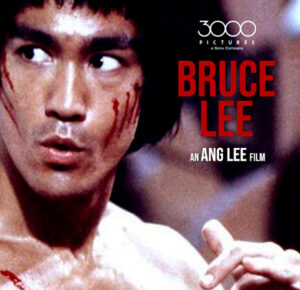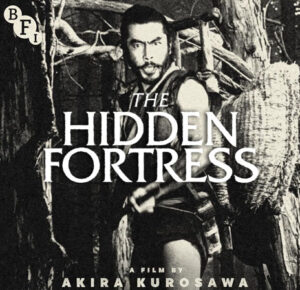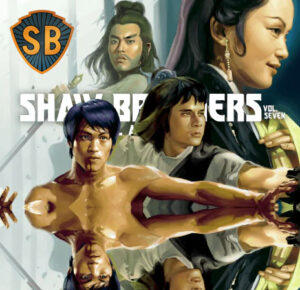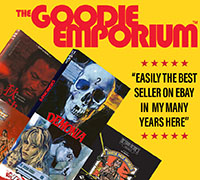A diverse range of titles will be available for purchase this Tuesday. A little something for everyone, as they say. So here are your Asian and genre-related blu-ray and DVD releases for the week of 11/15/11:
ASIAN CINEMA
Infernal Affairs (blu-ray) – ignore the gun-toting cover art and enjoy this 2002 Andrew Lau film starring Andy Lau and Tony Leung, now in glorious hi-def
Treasure Hunter (blu-ray/DVD) – a 2009 Taiwanese action-adventure film in the “Mummy” mold, starring Jay Chou of “The Green Hornet” fame and Eric Tsang. Released by Funimation
The Warring States (DVD) – a 2010 Chinese historical epic with a dash of romance and slapstick, co-starring the great Francis Ng
What Women Want (DVD) – it’s hard to believe Andy Lau would need magic powers to know what women want – he’s Andy Lau! – but that seems to be the case in this 2010 Chinese language remake of the American film, this time starring Lau and Gong Li
Ninja Triple Feature (DVD) – Switchblade Pictures presents three Japanese ninja’sploitation movies on one disc. Expect plenty of AV idols from the looks of it. Movies include: Ninja She-Devil, I Was a Teenage Ninja, and Ninjaken: the Naked Sword
FOREIGN CINEMA
Three Colors: Blue, White, Red (blu-ray/DVD) – Krzysztof Kieślowski’s trio of films, in French and Polish, starting from 1994 are released on blu-ray by the Criterion Collection
The Rules of the Game (blu-ray) – Jean Renoir’s classic 1939 black-and-white French film about class and social codes arrives on blu-ray from the Criterion Collection
CULT
Bellflower (blu-ray/DVD) – this controversial 2011 film that divided critics and viewers alike with its tale of love and homemade flame-throwers finally arrives on blu-ray and DVD
Giorgio Moroder Presents Metropolis: Special Edition (blu-ray/DVD) – the legendary composer and synth-pop pioneer presents his 1984 rock opera vision of Fritz Lang’s classic silent film “Metropolis,” now on blu-ray from Kino Video
Griff the Invisible (DVD) – your friends at Indomina release this charming 2010 indie superhero movie from Australia
Despair (blu-ray) – a 1978 adaptation of the novel by “Lolita” author Vladimir Nabakov, directed by Rainer Werner Fassbinder and now on blu-ray
Fist 2 Fist (DVD) – a 2011 low-budget fight movie starring Jino Kang and Bill Duff
Neverwhere (DVD) – the BBC presents the 15th Anniversary edition of this live-action adaptation of Nail Gaiman’s novel
Fading of the Cries (DVD) – a 2011 demon-slaying, vampire and zombie kind of low-budget flick, co-starring character actor Brad Dourif
Red 71 (DVD) – Variety says this 2008 film is “a highly stylized noir puzzle”
MAINSTREAM
The Big Lebowski (blu-ray) – previously only available as a deluxe limited edition package, you can the 1998 Coen Brothers film on single disc blu-ray this week
Gettysburg (blu-ray) – the director’s cut of this acclaimed 1993 Civil War film
Adrenalin – Fear the Rush (DVD) – a low-budget Miramax film starring Christopher Lambert and Natasha Henstridge
Warriors of Virtue – Return to Tao (DVD) – unbelievably enough, Miramax must have funded a low-budget, PG-rated sequel to Ronny Yu’s “Warriors of Virtue”
Best of the Best – Without Warning (DVD) – Miramax continues their string of low-budget releases this week with a sequel to the Eric Roberts “Best of the Best” series
CLASSICS
West Side Story (blu-ray) – the 50th Anniversary Edition of the 1961 classic musical
My Fair Lady (blu-ray) – the 1964 film starring Audrey Hepburn and Rex Harrison, now in hi-def
TELEVISION
Crime Story: The Complete Series (DVD) – we don’t usually cover TV releases on here but I figure this 1988 series deserves special mention as it was created by Michael Mann of “Heat” and “Public Enemies” fame
HORROR
Evil Dead 2 (blu-ray/DVD) – Sam Raimi’s 1987 horror-comedy classic is now available on blu-ray as a 25th Anniversary Edition
Prophecy (blu-ray) – the 1995 apocalyptic movie starring Christopher Walken and Viggo Mortensen, now on blu-ray
Humongous (DVD) – the Katrina’s Nightmare Theater imprint offers this 1982 slasher movie, rare and uncut on DVD
Interested in any of these movies? If so, we hope that you’ll consider ordering from our affiliate to help support this site. Thank you!






















Be the 1st to Comment